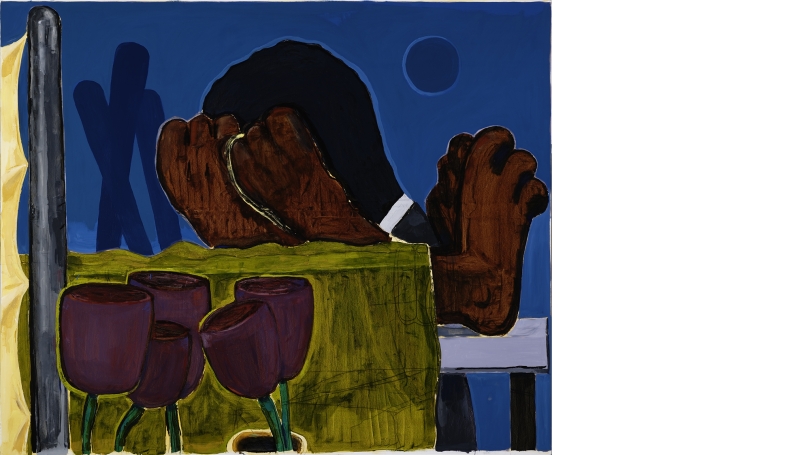Showcasing student curatorial and educational work is a key part of the Hood Museum of Art's mission, and nowhere is this more apparent than in A Space for Dialogue, the student-curated exhibition series that's been running since 2002. The first show by the Hood Museum's 2018–19 senior interns was Armando Pulido's Los Mojados: Migrant Bodies & Latinx Identities, which opened last May. Pulido highlighted prints and photographs from the museum's collection that speak to the complexity of the US-Latinx experience. Through the body and media, the featured artists explored an array of cross-cultural issues ranging from migrant labor rights in the 1960s to the current Central American refugee crisis.
Los Mojados was followed by Jules Wheaton's Society Engraved, which looked at copyright law related to eighteenth-century artist William Hogarth's prints. Hogarth's shrewd and satirical, social and political commentary prompted questions into the ethical issues around the production and distribution of prints, the right to profit from artistic labor, and the nature of what constitutes an original work of art. Annabelle Bardenheier curated the final summer exhibition, Creating Knowledge and Control, which considered technology, including big data and surveillance, as tools that restructure space, time, and the relations among people and activities.
This fall two more Space for Dialogue exhibitions will be on view. Charlotte Grussing's The Politics of Pink (September 30–November 3) uses art to explores pink's problematic associations with femininity, gender norms, and race, as well as its contemporary use in activism. It includes work by the Guerilla Girls, Fernando Botero, Jeff Koons, and Sonia Landy Sheridan, among others.
Victoria McCraven's show, Black Bodies on the Cross, features work by postwar and contemporary African American artists that explores the dissonance and duality present in the black Christian experience. Included artists are Romare Bearden, Ashley Bryan, Kara Walker, and Enrico Riley. McCraven explains, "By inserting black subjects into biblical narratives, these artists explore the ways in which the black experience can be understood as part of a universalizing Christian narrative that, ironically, often excludes black subjects." Black Bodies on the Cross is on view November 11 through December 22.
These students chose a wide range of themes, subjects, time periods, and materials for their exhibitions, showcasing the breadth and depth of Dartmouth student scholarship. Whether a contemporary photograph of a Brooklyn man, an eighteenth-century moralizing print, or a porcelain plate with the artist embracing a pink pig, each object helps tell a story, make an argument, or present an issue to the viewer.
